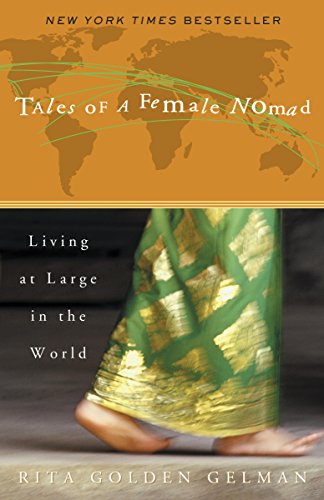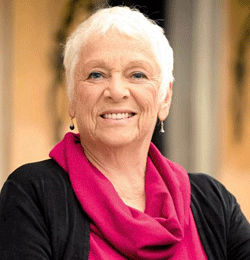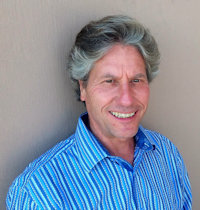Tales of a Female Nomad: Living at Large in the World

from amazon.com
Rita Golden Gelman is an ordinary woman who is living an extraordinary existence. At the age of forty-eight, on the verge of a divorce, Rita left an elegant life in L.A. to follow her dream of travelling the world, connecting with people in cultures all over the globe.
In 1986 Rita sold her possessions and became a nomad, living in a Zapotec village in Mexico, sleeping with sea lions on the Galapagos Islands, and residing everywhere from thatched huts to regal palaces. She has observed orangutans in the rain forest of Borneo, visited trance healers and dens of black magic, and cooked with women on fires all over the world. Rita’s example encourages us all to dust off our dreams and rediscover the joy, the exuberance, and the hidden spirit that so many of us bury when we become adults.
https://www.amazon.com/Tales-Female-Nomad-Living-Large-ebook/dp/B000XU8E5K
Author: Rita Golden Gelman

I was born on July 2, 1937, in Bridgeport, Connecticut. My father owned a small pharmacy on the east side of town and my mom worked in the store full time. As a child I spent a lot of time in the store unpacking the magazines and putting them into the rack and selling candy bars and gum. We also frequently visited my grandfather’s grocery store up on Whiskey Hill. I loved those bins of cookies and the refrigerated room where he kept the meat. And the little kitchen behind the store where the family gathered during business hours.
As a teenager, I worked every afternoon at the drugstore, mostly making sundaes and shakes at the soda fountain. I loved scooping ice cream, pouring the hot fudge over it, and squirting the whipped cream in a rising spiral with a cherry on the top. But even more, I loved interacting with the customers. Right from the beginning I was intrigued by the many shapes, sizes, accents, and styles of people who sat on the other side of the counter.
I went to Beardsley Elementary School, Harding High School for my freshman year, and Bassick High School for my last three years. I graduated from Bassick in the class of 1954 and went off to Brandeis University in Waltham, Massachusetts, where I got my B.A. in English and American Literature in 1958. (I went back to school many years later and studied anthropology at UCLA.)
My schools (before college) were all public, and every summer I would spend a week or two at Brownie and Girl Scout camp (Trefoil) and YWCA camp (Mohawk) and one summer I got a scholarship to a Hebrew speaking camp in the Poconos (Ramah). When I was fourteen, I began four summers as a swimming instructor at the JCC day camp in Stepney, CT.
When I finished college, my parents took off for Europe. I gave my brother Dick a party and sent him off to his first year at college. I packed up my cousin Sharon who had been living with my parents ever since her mother died four years earlier. Now her father had remarried and eleven-year-old Sharon was ready to join him in his new household.
Then I ran as fast as I could to New York City. In Bridgeport, I was always Fran and Al Golden’s daughter and whatever I did always found its way back to them. My behavior, I was told, reflected on the good reputation my father had built over the years. I didn’t want to be my father’s daughter. I wanted the freedom and anonymity of the big city. I moved to Greenwich Village.
In New York, I looked for work as a writer and dreamed of writing children’s books. My first job was with a children’s magazine called, FOR YOUNG NEW YORKERS (until it became YOUNG AMERICANS). They hired me as a file clerk. What they didn’t know was that I am totally lacking in organizing skills. I messed up the files so badly that they make me a writer just to keep me away from the files.
I loved that job and the people I worked with. It was like an education in the many ways people live life, the variations were way beyond the customers in my father’s drugstore and I was endlessly fascinated. I thought I had been dropped into a fictional kingdom inhabited by dynamic, dramatic, colorful, and unique short story characters. How exciting it was. And a great introduction to the world outside of Bridgeport.
When YOUNG AMERICANS folded, I freelanced at anything anyone would pay me to write. How a bakery modernized and doubled its profits. How to throw a spectacular New Year’s Eve party. How efficiency in the stockroom pays off. It was a fun time for me. I’d write, get paid, and play until my money was used up. Then I’d write some more.
I married in 1960. My husband was an editor and a writer who worked for SPORT magazine and later, LIFE, NEW TIMES, and eventually as a consultant to NEW WEST (which turned into CALIFORNIA), T.V. GUIDE, and others. I worked as an editor on an anthology of children’s books, and then I had kids. Mitch was born in 1962 and Jan in 1963. I was a stay-at-home mom, active in their schools (PS 41, PS 3, and IS 70) and an activist in the community. We had a house in Otis, Massachusetts, and we went up every weekend and all summer. The three-hour drive every Friday and Sunday was family time. We sang, played games, and talked about things we never had time to talk about during the week.
In 1972 I published my first children’s book, DUMB JOEY. View complete list of my children’s books.
In 1976 we moved to Los Angeles where I continued to write. I even got myself an office in Venice which was as close as I could get to Greenwich Village in L.A.
There are a lot more details about my early life and thoughts in the kids’ bio. And the rest of my story is in my book, TALES OF A FEMALE NOMAD.
Reviewed by: John Stokdijk

Ajijic, where I live, is about a thousand kilometers from Zapotec where Rita Golden Gelman begins her journey as a female nomad. This great distance is symbolic of the vast difference between the culture created by expats here in the state of Jalisco and the culture of the indigenous peoples living in the state of Oaxaca in the southern part of Mexico. It is also representative of how differently Gelman and I have lived our lives.
Tales of a Female Nomad: Living at Large in the World by Rita Golden Gelman gives us a wonderful opportunity to live vicariously. She is adventurous and courageous whereas I am cautious and careful. While I greatly enjoyed reading her story, I felt little desire to live a life such as hers.
I have been fortunate to travel to over thirty countries but I did so as a traditional tourist. My objective was having a vacation, a welcomed distraction from the demands of work. Gelman had something very different in mind for herself.
People are my passion. Unlike a traditional nomad, when I go somewhere, I settle in with the locals long enough to share the minutes of their days, to know the seasons of their lives, and to be trusted with their secrets. I have lived with people in thatched huts, slept in their gilded palaces, and worshipped with them at godly ceremonies and dens of black magic. I have also cooked with women on fires all over the world.
Gelman’s stories are about her immersive experiences in Mexico, Guatemala, Nicaragua, Israel, Galápagos Islands, Indonesia, Canada, New Zealand and Thailand.
Tales of a Female Nomad is more than a unique travel book. She also gives us numerous insights into her career as a writer. And she shares some very person details about her marriage and her adult children.
Meanwhile, our marriage is floundering. Over the years, our divergent interests and our personality differences have pushed us deeper into opposite corners... More and more we find ourselves in minor skirmishes... I suggest that we take a break from each other for a couple of weeks... He agrees to a break and counseling but adds that two weeks is not enough. He suggests two months...
The marriage does not survive but the book includes several sweet stories of Gelman’s evolving relationship with her children. She is more than a nomad, more than a caricature. She shares enough of her deep thoughts and emotions throughout the book that we can develop a picture of a whole person.
What I am feeling is a deep psychological fear with its roots in adolescence: a fear of being seen alone.
Then, as I lie in bed one night, burning up and in pain, I get the first spiritual message of my life: in shedding my skin, I am being reborn.
I am ready to move out into the unknown, to experience life with a new sensibility, to embark on my journey of inner and outer discovery.
Rita Golden Gelman is an American and it does not surprise me, a Canadian, that her perspectives profoundly change as a result of her experiences outside of her own country.
My visit to Nicaragua marks the end forever of my political innocence, which was already seriously damaged by the Vietnam war. I write what I saw and heard. When the book (Inside Nicaragua; Young People’s Dreams and Fears) is published, I worry that it will be seen as subversive; but instead, it is included in the American Library Association’s list of Best Young Adult Books of 1988. For all my anger at the Reagan policies, I am thankful to be part of a country that honors freedom of the press. It is a theme that will be reinforced over and over again during the years I live in Indonesia.
In Israel Gelman learns something important about who she is in her core, truly a citizen of the world.
As an adult, my Jewishness is way down on my list of how I see myself. I am a woman, a mother, a writer, and now, a nomad. In the absence of anti-Semitism, the fact that I was born Jewish seems unimportant to me.
I am thankful for the fact that Israel exists, and I will fight and vote and contribute to keep it healthy. But my humanity is what ties me to others, and that goes much, much deeper than a shared history.
I knew that Indonesia was the country with the largest populations of Muslims. But I did not know that “Bali is an island the size of Connecticut with a population of about 3 million, 95 percent of them Hindu.” Off and on, Gelman lives in Bali for eight years.
Near the end of her book Rita Golden Gelman shares a life lesson that applies to the expat community here at Lakeside. As I was planning to move here, I wondered whether it would be difficult to make friends with strangers with whom I had no shared past. But it has not been difficult because we can compress the past and leapfrog years by sharing intimate details of our lives, something I do more easily than many others.
Until I entered my nomadic life, I thought of “friendship” as a relationship that needs years to develop... But my lifestyle doesn’t give me the luxury of a shared history, and I need friends… I have learned how to compress time through introducing, early in my conversation, intimate details of my life… Once I’ve opened the conversation with intimate details of my life, the usual superficialities of an initial conversation have been bypassed.
Finally, Gelman shares one more life lesson that resonates strongly with me as I live my retirement years.
One of the most important things I have learned during the last fifteen years is how to enjoy and savor the present.
Comments
8 years ago — John StokdijkAs per our email exchange, in recent years Rita Golden Gelman, now 80, has been in Rwanda and Madagascar. https://drive.google.com/file/d/0B7C2SA5LS5QXUlBMRS1jR0xPck0/view?usp=sharing
8 years ago — John StokdijkHere is a link to the 2014 Ted Talk given by Rita Golden Gelman in 2014. https://youtu.be/q2tijFrHJ9g Here is a link to the article about Rita Golden Gelman written by Kelly Hayes-Raitt which was published in the May 2014 issue of El Ojo del Lago. http://chapala.com/elojo/index.php/164-articles-2014/may-2014/2507-rita-golden-gelman
Reviewed by: Joelle Bertolet

Before I gave up, however, I went back to Amazon and read the 1- and 2-star reviews, something I should have done before I recommended the book. What I found was a remarkably large number of very well-written and articulate negative reviews. One of the more compassionate reviewers wrote, "It was clear this was a deeply meaningful experience for the writer, but I felt so removed from it I really didn't care what happened next." I think this summed up my experience nicely. Whether it's a novel, an autobiography, or a TV series, I have to care about at least one of the characters. I found I was not even curious what was going to happen to Gelman on the next page or the next chapter. And I cared even less about the people she described. Perhaps she felt connected to them in a deeply personal way, but if so, it did not come across in her writing. As a travelogue, the book also fell short. One wonders if a good editor could have brought out more of the stories behind the story.
